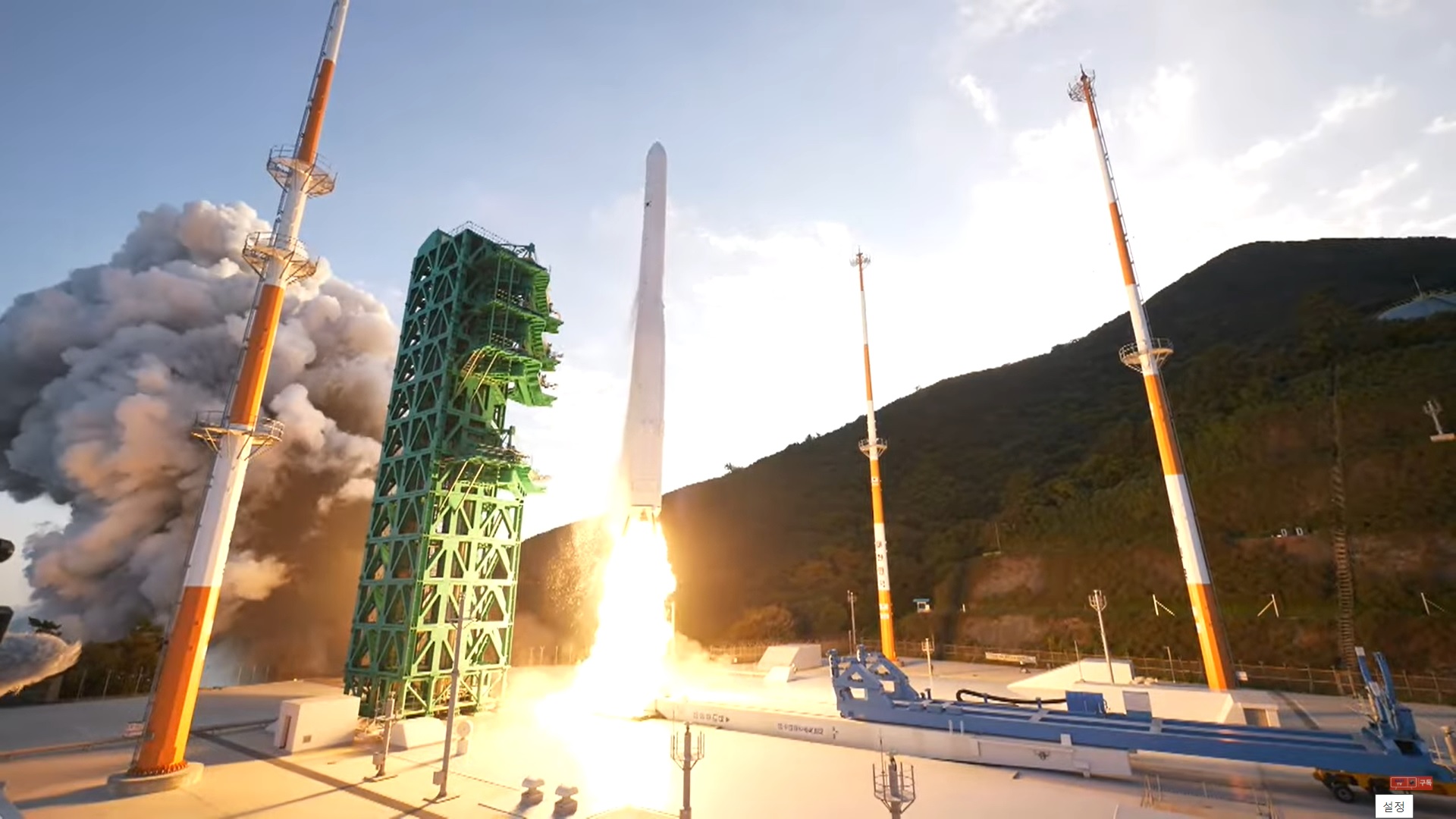SEOUL, South Korea — South Korea’s first domestically built rocket reached its desired altitude Oct. 21, but failed to put a payload into its intended orbit due to the third-stage engine’s malfunction.
“The flight of Nuri was completed. I’m very proud of this. Regrettably, it didn’t reach the goal it aimed at,” President Moon Jae-in announced at Naro Space Center in Goheung, where the kerosene-fueled, three-stage KSLV-2, also known as Nuri, lifted off at 4 a.m. Eastern, carrying a 1.5-ton dummy payload. “Shooting a rocket to the height of 700 kilometers itself is a great achievement. We are one step closer to outer space.”
The announcement was made one hour and twenty minutes after the launch. “Everything from liftoff to payload deployment unfolded smoothly. All happened with our own technologies,” Moon said. “But putting a payload on an intended orbit has remained as a mission unaccomplished.”
Expressing gratitude to all the staff who contributed to the rocket’s development, the president said, “If we fix shortcomings discovered today, we will be able to make a second launch slated for May next year a success.”
The deployment failure was due to shorter than expected burning of the third stage’s 7-ton engine. “The third stage’s engine was supposed to burn for 521 seconds, but it stopped burning at 475 seconds,” said Minister of Science and ICT Lim Hye-sook. “Because of this the payload failed to fly at the required minimum speed of 7.5 kilometers per second when it was deployed 700 kilometers high.” The minister said an investigation will be launched to figure out what caused the malfunction.
KSLV-2 lifted off one hour later than initially announced because engineers needed more time to examine the rocket’s valves. Live footage showed the 47.2-meter rocket, emblazoned with South Korea’s flag, soaring into the air with bright yellow flames shooting out of its engines following blastoff.
According to the science ministry, the first-stage booster with a cluster of four 75-ton engines was separated at 4:02 a.m. Eastern as planned. The separation of its payload fairing took place one minute later, and the second stage booster with a 75-ton engine at 4:04 a.m. The ministry said the third stage with a 7-ton engine managed to push the dummy payload to the intended orbit of 700 kilometers above the Earth, but its deployment was conducted at a speed slower than expected 7.5 kilometers per second, due to the engine malfunction.
South Korea plans to make another test flight in May using the same rocket hardware.
KSLV-2 is the first step for South Korea’s ambitious space programs, including the launch of the nation’s first robotic lunar lander on a domestically developed rocket by 2030.
South Korea had previously launched a space launch vehicle from Naro Space Center in 2013, which was a two-stage rocket built mainly with Russian hardware. That launch came after years of delays and consecutive failures. The rocket, KSLV-1, reached the desired altitude during its first test in 2009 but failed to eject a satellite into orbit, and then exploded shortly after takeoff during its second test in 2010.
